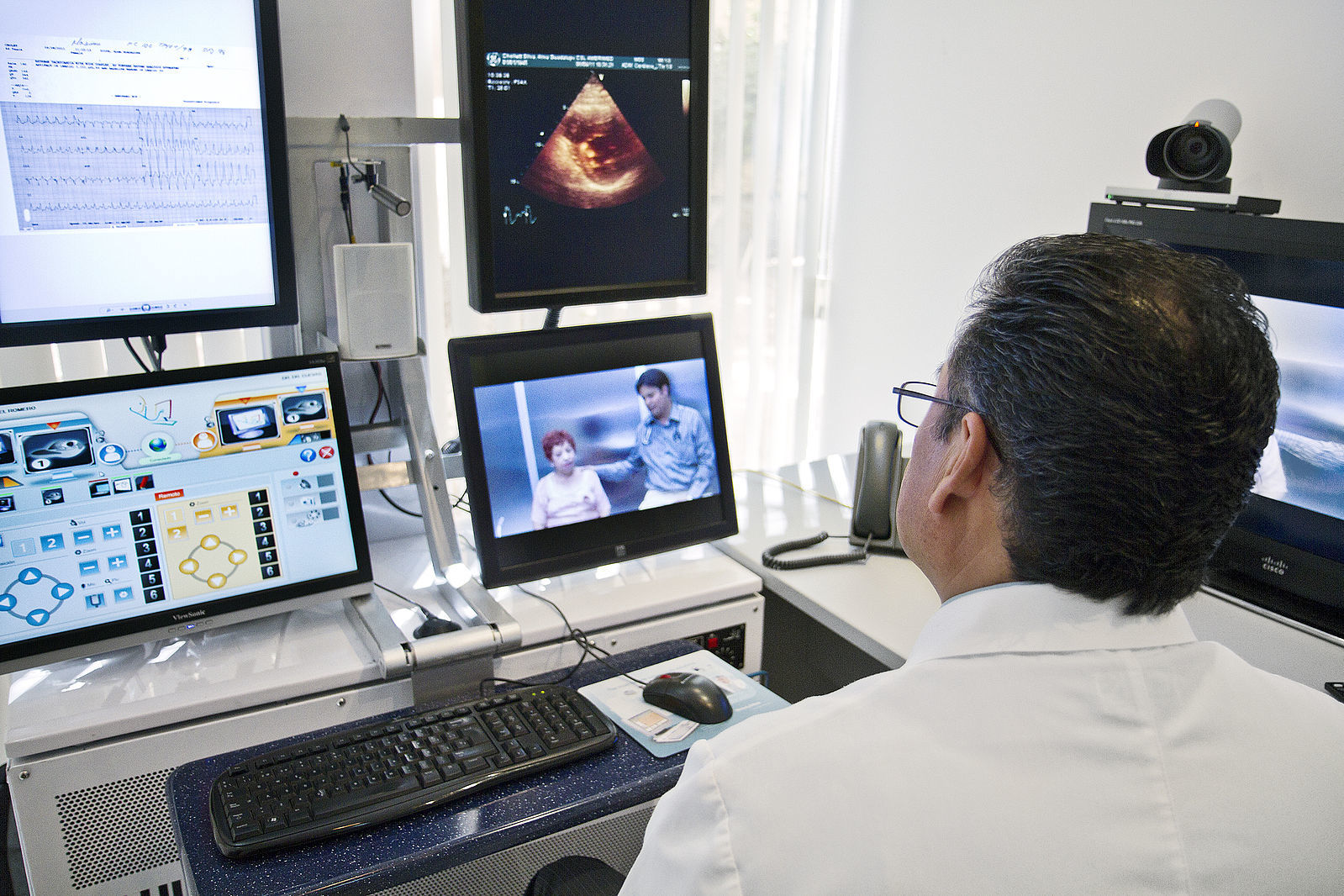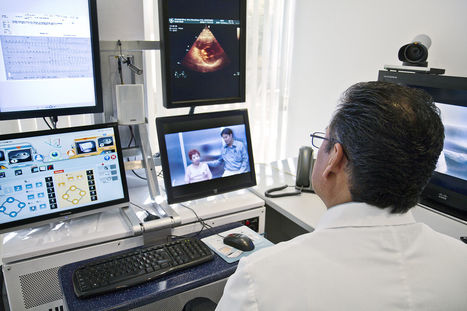telemedicine
According to a survey taken by Medical Group Management Association, as many as 97% of healthcare providers now provide patient care via telehealth as a result of the pandemic.
And it comes as no surprise considering that, to-date globally, there have been some 7.1 million COVID-19 cases and more than 400,000 related deaths.
As a result, those in the most disrupted industries have sought out business-supporting technologies, solutions, and innovations. More specifically, healthcare professionals are relying on virtual tools like telehealth to provide patient care.
Telehealth isn’t new, but the sudden usage surge and adoption certainly is. Here are some of the reasons why telehealth has been a top COVID-related response for providers, and why we expect usage to continue climbing even after the pandemic has passed.
Safety
Doctors, nurses, medical assistants, and office administrators are at an increasingly high risk of contracting illnesses – especially during a pandemic.
This added risk, and the fear thereof, has fueled a remote-care rush among providers. But beyond the pandemic, the benefits of telehealth are undeniable.
When you reduce contact, you reduce transmission, and when you reduce transmission you gain a healthier practice as a whole.
A healthy, low-risk practice is good for everyone but it’s particularly vital for high-risk patients such as the elderly and immunocompromised.
Convenience
Through telehealth, patients are able to skip the often burdensome travel requirement that comes with traditional care. On the physician end, doctors who need to split their time between in-office care and hospital, emergency or surgical care, are now more equipped to do so. Connecting with patients remotely gifts doctors and physicians with scheduling flexibility.
Increased Accessibility
Traditionally, space and time constraints have limited patient-physician relationships to a mutually shared location. Telehealth allows physicians to treat patients who would normally be considered “out of reach.”
This ability helps practices balance out an increasing demand for care, especially for those in remote areas, and gives patients greater provider options.
Conservation of Supplies & Space
While medical centers in hard-hit cities have become overwhelmed due to the outbreak, telehealth enables doctors to keep low-risk patients at home, saving bed space and medical supplies for patients in critical condition.
Some centers are also using digital channels for communication between doctors and admitted patients in order to minimize contact and risk of transmission. This method also helps medical centers preserve valuable equipment such as masks, gloves, goggles, and high-demand personal protective equipment.
Perfect for Radiology and Psychiatry Departments
According to a report from Saint Barnabas Medical Center, COVID-19 may completely change the working dynamics for radiologists.
Many radiologists are already working from home, reviewing scans via digital channels, and some say that the radiology department will not be the same after the pandemic ends. These remote channels have also enabled radiologists to connect with each other to discuss cases and results.
With the World Health Organization (WHO) anticipating a COVID causing increase in mental health issues such as depression, anxiety and stress, psychiatrists and psychotherapists are moving sessions to online channels as well.
According to the American Psychiatric Association, virtual sessions benefit the provider and patient – aiding to the privacy that has always been of high concern for psychiatrists, psychotherapists, and their patients.
Source: www.talkehr.com
As the world reacts to the growing threat of the new coronavirus, healthcare workers are on the front lines of the effort to combat this disease, safeguarding the population while also striving to protect their own health with limited supplies (including masks) while hospitals fear shortages of ICU beds and ventilators.
It’s clearly an all-hands-on-deck situation where ingenuity and flexibility will be called for to help us get through the pandemic. One tool in the arsenal against coronavirus (COVID-19) is the use of telehealth systems.
As a telehealth systems provider, Advanced Data Systems has helped many medical practices implement these solutions and see the results. Given the critical nature of today’s environment, we want to provide insight into how telehealth services can play a major role in the future.
What Are Telehealth Services?
Telemedicine, also referred to as telehealth services, involves allowing patients to use their own equipment, such as a smartphone, tablet or desktop computer with a camera connected to the internet to engage in online doctor consultations. The doctor can be in any location too, whether at the clinic, responding to patients from home, or out on rounds.
Telehealth is useful in providing services to people in remote locations where medical providers are scarce. It’s also a boon for patients who have difficulty leaving their homes, such as if they have debilitating mental or physical ailments or must stay at home to take care of children or aging parents.
And now that we are all being encouraged to keep our distance from one another to slow down the spread of coronavirus, telehealth becomes an increasingly vital technology to lean on.
“The use of telemedicine is going to be critical for management of this pandemic,” said Dr. Stephen Parodi, an infectious disease specialist and an executive from The Permanente Medical Group, in the New York Times article.
The Permanente Medical Group is a doctors’ group associated with Kaiser Permanente, a major leader in telehealth. The Times also noted that private health insurers met with President Donald Trump to tell him they will pay for telehealth visits of people who may be infected with the coronavirus.
This is major news and a critical step for keeping people safe and healthy. Empowering medical practices to provide necessary services for those in need during the coronavirus pandemic will allow for many more patients to be diagnosed, treated, and cured without the stresses of medical expenses.
How Medicine is Changing With Social Distancing
Governments around the world are urging citizens to practice social distancing as much as possible, maintaining at least 6 feet away from one another, especially when out and about. Patients are also being urged to call doctors, hospitals, and clinics before coming, as the facilities may be overwhelmed.
This makes telehealth services an ideal solution for helping individuals maintain a safe distance. After all, if you can consult with your primary care physician using your smartphone from the safety of your own home, you avoid coming into contact with people who are currently carrying and potentially transmitting the virus and infecting you and your loved ones.
Telehealth also helps to increase the number of patients that nurses and doctors can visit, which means more people can receive vitally needed services without having to brave the crowds.
Doctors are also using telehealth systems within their own facilities to keep people safer during the coronavirus emergency.
“Health care workers at Massachusetts General Hospital in Boston have lashed iPads to IV poles to create makeshift video portals through which they can communicate with patients in isolation rooms,” reported Lee Schwamm, vice president for virtual care at Mass General's parent, Partners HealthCare, in a CNN report.
New Federal Funding Against Coronavirus Includes Telehealth Coverage
Older people are more susceptible to becoming compromised and dying from complications stemming from the novel coronavirus, especially those with underlying health conditions, such as heart issues, diabetes, and cancer.
Fortunately for elderly patients, congress has agreed to a new bill for emergency spending against coronavirus. According to mHealthIntelligence, the new bill waives geographic restrictions from Medicare on telehealth. Providers can engage with patients via telehealth through the emergency area definition in the bill. It quotes House Speaker Nancy Pelosi, who said, “To protect public health, the bill will allow Medicare providers to extend telemedicine services to seniors regardless of where they live, at an estimated cost of $500 million.”
Furthermore, “this expanded capacity will help preserve access to in-person care for those in critical need and allow the majority of initial screenings to happen outside the hospital,” according to the Alliance for Connected Care.
This means patients that truly need to be cared for inside of medical facilities will still be able to receive treatment while other patients are taken care of, at least initially, via telehealth.
Commercial payers are also helping to enable more patients to make use of telehealth services. “For example, Aetna and several Blue Cross Blue Shield plans have waived telehealth visit copays,” according to HIT Consultant, which noted, “Blue Cross Blue Shield of North Carolina has taken things one step further by temporarily covering telehealth services at the same rate as an in-person office visit.”
Technical Challenges for Telehealth During the Coronavirus Pandemic
Launching a telehealth system will come with some technical challenges that you and fellow stakeholders should keep in mind. For example, newly eligible Medicare patients are not currently covered for free telehealth visits.
Another report from mHealthIntelligence noted that, “To qualify as a medical provider who can receive payment for telehealth visits under the legislation, the provider must have a previous relationship with the patient, and they must have provided service within the three years prior. This barrier makes it difficult to offer covered telehealth visits in Medicare.”
Healthcare industry professionals are suggesting that the federal government waive rules about providing free telehealth services to seniors via Medicare during the outbreak since hospitals are not allowed to treat Medicare patients without charging them. The coronavirus emergency calls for waiving such rules.
Source: www.adsc.com

Previous work has specifically described the potential for using telemedicine in disasters and public health emergencies. No telemedicine program can be created overnight, but U.S. health systems that have already implemented telemedical innovations can leverage them for the response to Covid-19.
A central strategy for health care surge control is “forward triage” — the sorting of patients before they arrive in the emergency department (ED).
Direct-to-consumer (or on-demand) telemedicine, a 21st-century approach to forward triage that allows patients to be efficiently screened, is both patient-centered and conducive to self-quarantine, and it protects patients, clinicians, and the community from exposure. It can allow physicians and patients to communicate 24/7, using smartphones or webcam-enabled computers.
Respiratory symptoms — which may be early signs of Covid-19 — are among the conditions most commonly evaluated with this approach. Health care providers can easily obtain detailed travel and exposure histories. Automated screening algorithms can be built into the intake process, and local epidemiologic information can be used to standardize screening and practice patterns across providers.
Much medical decision making is cognitive, and telemedicine can provide rapid access to subspecialists who aren’t immediately available in person.
Recognizing that patients prioritize convenient and inexpensive care, Duffy and Lee recently asked whether in-person visits should become the second, third, or even last option for meeting patient needs
read the original article at https://www.nejm.org/doi/10.1056/NEJMp2003539
Lire l'article complet sur : www.nejm.org




